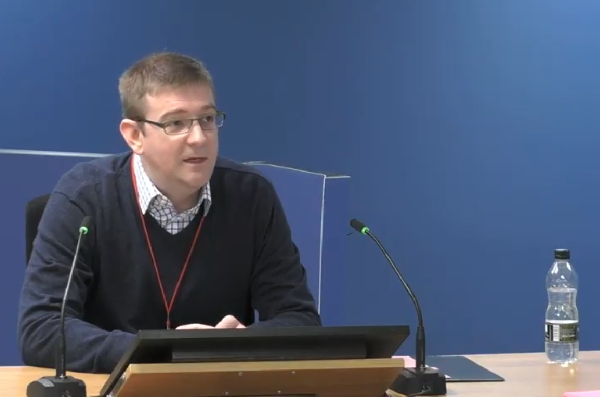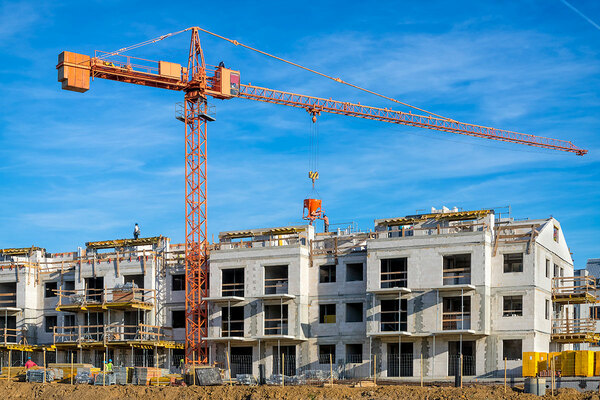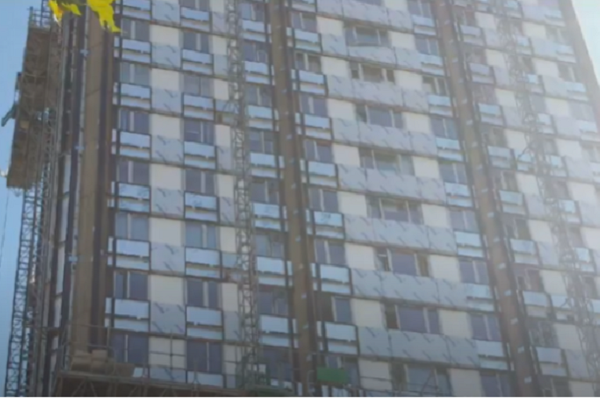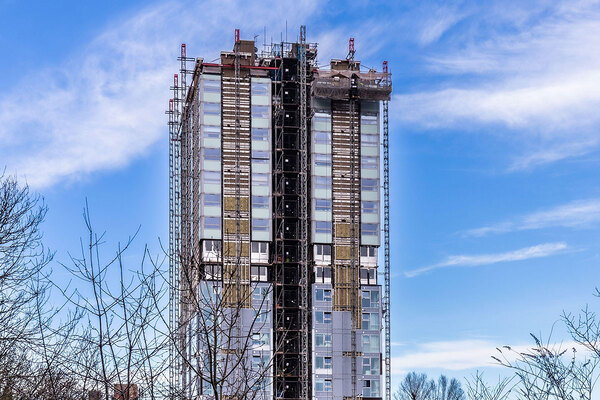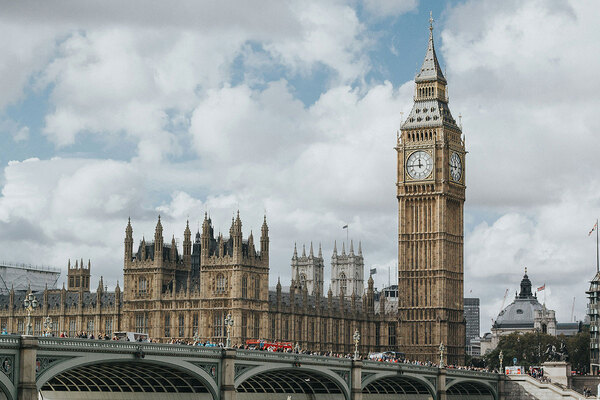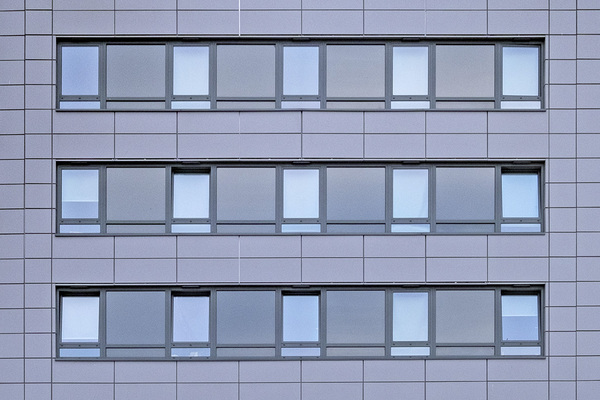Grenfell cladding and insulation firms engaged in ‘sinister’ attempts to undermine regulations, inquiry hears
Major insulation and cladding manufacturers have engaged in “sinister” attempts to undermine building regulations and have manipulated the testing regime to present dangerous products as safe, the Grenfell Tower Inquiry heard this morning.
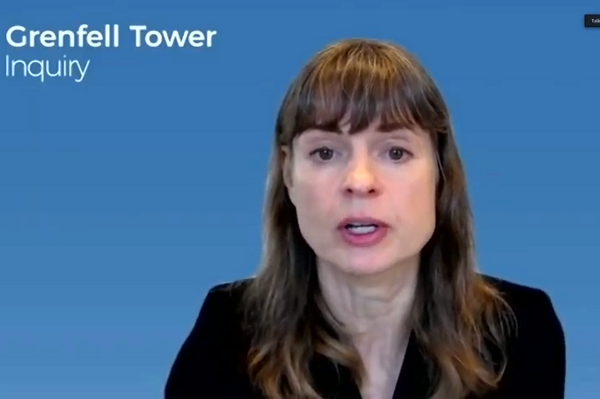
In an explosive opening statement, Stephanie Barwise QC, acting on behalf of the survivors of the fire, read a series of internal emails which included staff at insulation manufacturer Kingspan branding its own testing as “complete spin” and cladding manufacturer Arconic saying “we are not clean”.
She said the insulation firms involved in the tower had adopted a practice of adding fire retardants to their products in order – in the words of a research paper from one – to pass “unrealistic fire tests”.
In a particularly severe attack on the actions of Kingspan – a market-leading insulation supplier – Ms Barwise accused the firm of having a “seminally causative role” and “setting the precedent” that combustible insulation could be used on high rises.
Ms Barwise attacked the organisation’s actions since the fire and said its “unrepentant arrogance is truly chilling”.
“Perhaps the most sinister aspect of the events leading to the product selection at Grenfell is the manner in which the manufacturers well understood the statutory regulation and guidance and sought to circumvent it by clever marketing,” she said.
She said manufacturers had lobbied bodies such as the National House Building Council (NHBC) and the Building Control Alliance (BCA) to issue guidance which “contravened the building regulations and guidance”.
Her opening statement to the phase of the inquiry that will look at the actions of the companies which made and sold the products used in Grenfell Tower’s deadly facade focused primarily on three companies: Kingspan, Celotex and Arconic.
Kingspan
In May 2005, Ms Barwise explained today, Kingspan carried out a large-scale test on a cladding system involving its flagship product: K15. This was just months before a change to building guidance would permit this testing route to allow insulation to be used on high-rise buildings.
She said that while the firm was not aware the product was being used on Grenfell Tower, “its actions over a prolonged period were designed to give the impression that the 2005 test proved K15 could be safely used over 18m”.
But, Ms Barwise said, this test was “wholly invalid”. She said it employed fire barriers made from steel and graphite which were not commercially available and were of “phenomenal efficacy”, preventing flames spreading over the top of the rig and failing the test.
Moreover, she said the chemical composition of K15 was significantly changed in 2006 and when a new test was run on the new product in 2007, its own observers referred to a “raging inferno”.
The Building Research Establishment (BRE), where the test was carried out, were said to have made clear “that in fact the K15 was fully involved in the fire and continued to burn after the heat source was extinguished”.
Ms Barwise said a successful test in 2014 was irrelevant as it used a system which only applied to steel-frame construction.
From 2014, much wider use of combustible insulation was adopted via the process of desktop studies – assessments by fire professionals in lieu of actual tests. This was on the basis of guidance produced by industry body the BCA, with the support of the NHBC, through its Technical Note 18.
Ms Barwise said Kingspan pushed for this guidance to be created. “It is now clear that Kingspan was actively involved in the drafting of both pieces of guidance, as internal email exchanges show,” she said. “Kingspan was, in its own words, ‘slowly educating the NHBC and working with them to produce BCA Technical Note 18 that promotes BS 8414’ and desktops.”
The company also obtained ‘Class 0’ certificates for K15 from the British Board of Agrément (BBA), which she said were only relevant to the “foil face” of the insulation board, not the whole product.
This testing was described in internal emails as “a bit of a cheat” and “complete spin”, and Ms Barwise said Kingspan’s dealings with the BBA – which provides respected certification for construction products and is widely trusted in the UK market – “reflect a complete lack of candour on Kingspan’s part”.
Later in the day, David Sawtell, representing the BBA, told the inquiry that the body had been informed by Kingspan on 30 October 2020 that it was removing the three BS 8414 test reports.
Ms Barwise also said a certificate from Local Authority Building Control (LABC) describing the product as ‘limited combustibility’ was “simply wrong and indefensible”.
The test on K15 has been withdrawn, the inquiry revealed this morning, a move which could have enormous ramifications for the building industry since the product has been very widely used.
Ms Barwise said that since Grenfell, Kingspan has been “trumpeting itself as a paragon of [Dame Judith] Hackitt motivated virtue” and said the firm’s “unrepentant arrogance is truly chilling”.
In his opening statement, Geraint Webb QC, appearing for Kingspan, said the company had discovered “important shortcomings” in its “processes and procedures” for three tests, one in 2005 and two in 2014.
However, he added: “Further testing in 2015, 2016 and since the fire, has supported and validated the performance claims made historically in respect of those three earlier tests and the company is confident therefore that at the time of the Grenfell Tower refurbishment these shortcomings did not impact the safety of any cladding system incorporating K15 which relied upon those three BS 8414 tests.”
Nonetheless, he offered a “full apology” for the discrepencies.
Regarding the 2007 test cited by Ms Barwise, Mr Webb claimed a test using the same cladding product with a non-combustible insulation had also failed.
He also told the inquiry that Kingspan did not know any of its product had been used on Grenfell Tower until after the fire, but that government testing “strongly indicates” that the cladding used in the refurbishment was not safe regardless of what insulation was placed behind it.
Defending the role of large-scale testing, Mr Webb added: “It's appreciated that opinion may be divided on this issue, but Kingspan Insulation believes that one of the lessons to be learned from this tragedy is that it is inherently safer to test any particular cladding system as a whole rather than to assume it to be safe because each component has passed, or has apparently passed, some smaller-scale test.”
The BRE will give its statement on Monday.
Celotex
While only a relatively small amount of Kingspan’s product was used on the tower, the majority of the insulation on the walls was a Celotex product: RS5000.
The product passed a large-scale test in 2014, which the inquiry has already heard, which involved the use of undeclared fire-resisting magnesium-oxide boards to “fortify” the cavity barriers.
Ms Barwise said these “stopped the flames dead in their tracks” and Celotex had obtained a misleading report from the BRE which “concealed the way in which the test had been distorted”.
She said Celotex had then sought to extend the scope of buildings on which the product could be used by obtaining a certificate to this effect from the LABC.
“On top of all this, Celotex specifically pursued Grenfell: Celotex’s internal email exchange in November 2014 makes clear that Grenfell was Celotex’s number one must-win bid,” she said.
She read out an email from Celotex’s Rob Warren sent in 2015, which said the firm’s approach was effectively to offer its product for use and “take it on the chin” if it was rejected, noting the confusion among building control officers about its applicability.
As is now notorious, it also advertised the insulation as “acceptable for use on buildings above 18m”. “Celotex cannot hide from the fact that its intention was to mislead,” Ms Barwise said.
She also said both insulation firms had added adopted a practice of adding fire retardants to their products in order to get through large-scale testing – a fact which “calls into question the viability of large-scale testing”.
“This practice of adding fire retardants is clear from Saint-Gobain papers [the parent company of Celotex], including [a] research paper which makes clear that this practice of including retardants is not only hazardous to health and the environment, but furthermore it is done solely, and I quote, ‘in order to pass unrealistic fire safety tests’,” she said.
In its opening statement, Celotex said the product should not have been used by the team at Grenfell, given they did not follow the large-scale test it had carried out and that its combustibility was “clearly highlighted” by the firm.
It said the construction professionals involved in the refurbishment were “unaware of, disregarded or otherwise failed to follow” the requirements of building guidance. “These failings were fundamental and should have been identified by building control. None of these matters was Celotex’s responsibility,” the firm’s barrister said.
Celotex said it accepted the test in 2014 had been “misdescribed”, but a rerun of the test using the correct description in April 2018 saw it pass. It said as the test was not being relied on, the discrepancies had no baring on the installation of the system on Grenfell Tower.
It emphasised that none of the staff involved from Celotex’s side remain employed by the firm.
Arconic
Arconic is the multinational materials company which made the cladding panels used on the external walls of Grenfell Tower.
In 2005, Arconic had tested its Reynobond PE product to European standards in 2005 and discovered a major difference between its riveted form (when it is bolted to the building) and cassette form (where it is hung on rails). The cassette form failed the testing badly, with the test stopped due to the panel burning and resulting in a rating of E.
But Ms Barwise said the firm held a meeting in Luton in 2006, where it recognised the need to obtain a BBA certificate for its cladding panels to “capture the public sector of the market” for cladding.
The firm obtained this certificate – which was shown to the team at Grenfell Tower – in 2008. It did not tell the BBA about the 2005 testing, despite its contract requiring disclosure of all testing information then available to it.
But the certificate appeared to apply to both the cassette and riveted form of the panel.
Mr Sawtell, representing the BBA, later told the inquiry the difference between information possessed by the manufacturer and that provided to the board was “of great concern” and that Arconic “were unable to explain the failure to provide this information to the BBA's satisfaction” when challenged, leading to the certificate being withdrawn in 2019.
Craig Orr QC, appearing for Celotex, said that had the BBA known of this testing, it would have graded the panels as E – meaning it would not have been used on towers above 18m in the UK.
When Claude Wehrle, a senior member of the team at Arconic, was asked about the discrepancies in this testing in 2010, he was said to have written: “It’s hard to make a note about this… because we are not clean.”
Ms Barwise said the firm was monitoring large cladding fires in France, Australia and the Middle East and knew that “all polyethylene composites react the same way”. But no warning was given to the team refurbishing Grenfell Tower.
She said that this knowledge went to the top of Arconic, as Mr Wehrle “made clear to Diana Periera, American president of Arconic Building and Construction, that PE was Euroclass C to E and, in his words, flammable” in April 2015.
But Ms Barwise said that by 2013 the firm had a “clearly formulated marketing strategy of targeting architects and investors together with main contractors and installers, pushing the aesthetics of the product onto architects through [professional training sessions]”.
Mr Orr said that it promoted the cheaper and more combustible polyethylene version of the product above its fire retardant one because “it was concerned to ensure it's products remain competitive in the UK”.
Before Ms Barwise’s statement, the inquiry heard that three of its witnesses based in France and Germany are currently refusing to appear before the inquiry, due to legislation known as the ‘French Blocking Statute’ which prohibits the revelation of commercial matters in foreign courts.
Richard Millett QC, counsel to the inquiry, said there was “a very low probability” of any of the witnesses being prosecuted for breaches of this and that their non-appearance would damage their reputation among the public and the markets.
He said their evidence will be examined in their absence if they do not attend.
In Arconic’s opening statement, it said it was working to get assurances to help the witnesses attend and that they had taken their own legal advice on the matter.
More generally, the firm said the product had been “misused” in a way that was “entirely peculiar to Grenfell” and “could not have been predicted”. It said the design involved “numerous departures from building regulations” and that the product was “capable of being used safely if adequate safety measures are designed”.
Arconic said it was entitled to proceed on the basis that the UK regime would create a safe environment for the use of its product.
The Grenfell Tower Inquiry continues.
